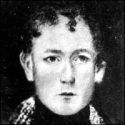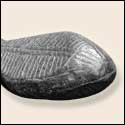 The Power of Technology (1800 - 1850)
The Power of Technology (1800 - 1850)
Previously we said that there are different kinds of histories. Some are the stories about how people lived, others about wars, and still others about politics or art or science. One of the most interesting to us today is the history of what is called technology. That is, the story of how we learned to make tools and machines, and how to use them.
 Mankind’s use of tools began long before history was ever recorded. One of the greatest discoveries was the use of heat from fire. Probably even before that, however, our ancestors were trying to improve technology so they could improve ways of obtaining food, shelter and protection.
Mankind’s use of tools began long before history was ever recorded. One of the greatest discoveries was the use of heat from fire. Probably even before that, however, our ancestors were trying to improve technology so they could improve ways of obtaining food, shelter and protection.
But the greatest secret of all – one that will improve any tool – is the power to move objects. We call it force, or energy. Once a person discovers the force to help him or her self, they will eventually invent and build better machines.
In a way, mankind is a machine; able to lift big weights, haul logs, and throw stones long distances. But such force is limited. In the past, mankind has tried to find new sources of power. At first the solution seemed quite simple. Sources of power could be found in other people – slaves or prisoners. Other sources of power were animals – oxen, horses, and even dogs.
 In their endless search for power, people discovered better kinds of energy. They found that water would float wooden rafts and boats; people living on open lands discovered how to make and use a wheel. These first few ancient steps became whole ladders leading to more discoveries and inventions.
In their endless search for power, people discovered better kinds of energy. They found that water would float wooden rafts and boats; people living on open lands discovered how to make and use a wheel. These first few ancient steps became whole ladders leading to more discoveries and inventions.
The force behind blowing wind, people later learned, could be caught in a sail large enough to move a loaded boat or heavy grindstones in a windmill. The energy in falling water could be channelled and controlled to turn huge mill wheels. One day, James Watt, in Scotland, discovered even greater energy in steam. Even a small quantity of boiling water, changed to steam, could be used to drive a complicated system of wheels and axles.
 While the Loyalists were settling in British North America, Watt was already putting his steam engines to work. One of the most important facts about the years following 1783 is that the steam engine, as well as new settlers, immigrated to New Brunswick. At first in the next few pages you will hardly notice the presence of the steam engine; neither did the settlers. Its effect was gradual and limited to a few people. Only after it had become part of the everyday scene, did it make life different for most everyone.
While the Loyalists were settling in British North America, Watt was already putting his steam engines to work. One of the most important facts about the years following 1783 is that the steam engine, as well as new settlers, immigrated to New Brunswick. At first in the next few pages you will hardly notice the presence of the steam engine; neither did the settlers. Its effect was gradual and limited to a few people. Only after it had become part of the everyday scene, did it make life different for most everyone.